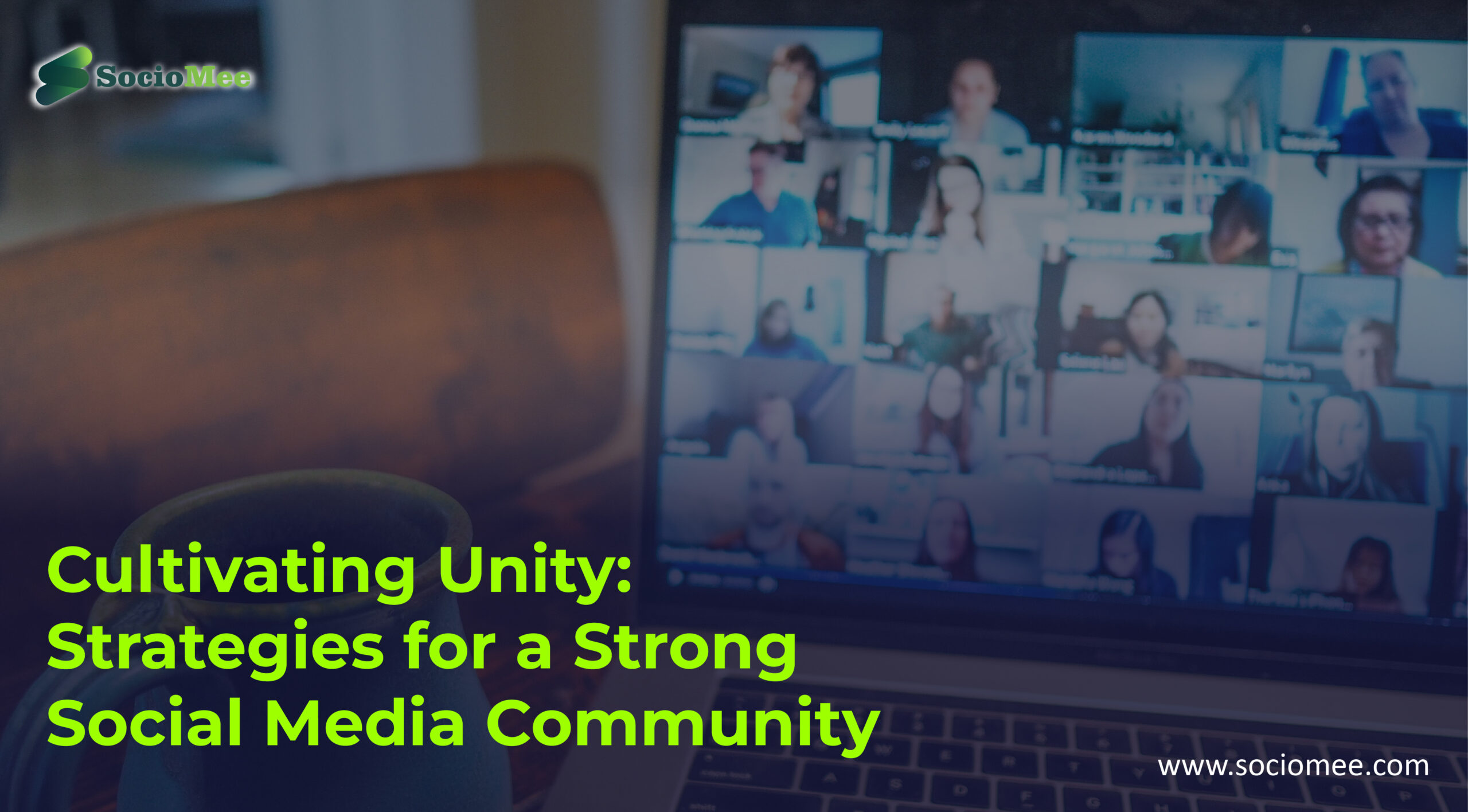In the past decade, the growth of social media networks has been exponential, and businesses have had to adapt to this new reality. As the use of social media has become more prevalent, it has become increasingly important for businesses to understand the impact that it can have on their reputation and public perception.
This article will examine how businesses can use social media to assess the impact of their reputation and public perception, as well as how to effectively manage their social media presence. Moreover, it will look at the potential risks associated with using social media, and how to maximize its potential benefits.
#1. The Role of Social Media in Shaping Business Reputation
Social media has become an integral part of our lives and is used by businesses to engage with their customers, build relationships, and shape their reputation. Businesses must understand the power of social media and use it strategically to create a positive perception of their brand. In this article, we will discuss the role of social media in shaping business reputation and how businesses can use it to their advantage.
- Monitor Your Reputation: One of the most important aspects of managing a business’s reputation is monitoring what people say about it. Social media allows businesses to track what people are saying about them and respond to any negative comments or reviews. This can help businesses address customer concerns and build customer loyalty.
- Build Relationships: Social media is a great tool for businesses to build relationships with their customers. It can be used to provide customer service, answer questions, and share information about the company and its products. This allows businesses to build trust and show customers that they care about their feedback and opinions.
- Promote Positive Content: Social media can be used to promote positive content about the company. This can include customer testimonials, positive reviews, and positive news coverage. This will help businesses create a positive image and attract new customers.
- Engage With Customers: Social media allows businesses to engage with their customers and get feedback on their products and services. This can help businesses understand what their customers like and dislike and make necessary changes to improve their products.
- Leverage Influencers: Influencers have a large following and can help businesses reach a larger audience. Businesses can partner with influencers to promote their products and services and build a positive reputation.
By leveraging the power of social media, businesses can create a positive perception of their brand and attract more customers. Businesses must use social media strategically to monitor their reputation and engage with their customers to build relationships.
#2. How Social Media Can Help or Hurt a Company’s Public Perception
Social media has become a powerful tool for businesses to build relationships with their customers, increase brand awareness, and shape public opinion. However, companies must be aware of the potential consequences of their social media activities, both positive and negative, on their public perception.
On one hand, social media can be a great asset for a company, providing a direct line of communication with consumers, allowing for faster response to customer inquiries and complaints, and offering a platform for promotional campaigns. Through the use of targeted advertising, companies can reach a wide variety of potential customers and increase their sales. Moreover, social media can be a great tool for developing relationships with customers, providing a platform for engaging conversations and allowing for more personalized interactions.
On the other hand, social media can also be a double-edged sword for businesses. Companies must be especially mindful of how their messages and posts are perceived by the public. A poorly crafted post or a mismanaged customer service situation can quickly damage a company’s reputation. In addition, companies must be vigilant in monitoring the content of their pages to ensure that no negative comments or posts are left unchecked.
In order to ensure a positive public perception, companies must use social media strategically and thoughtfully. Companies should be mindful of the type of content they are posting, and strive to maintain a consistent brand voice, tone, and aesthetic. Companies should also make sure that their content is meaningful and relevant to their target audience. Furthermore, companies should make sure to respond quickly and courteously to customer inquiries and complaints. Finally, companies should monitor their social media accounts regularly to ensure that no negative comments or posts are left unchecked.
Connect with new world
#3. Strategies for Managing a Brand’s Online Reputation
The internet can be a powerful tool when it comes to managing a brand’s online reputation. With the right strategies and tactics, a brand can make sure that its online presence is positive and accurately reflects the company’s values. Here are five strategies for managing a brand’s online reputation:
- Monitor Social Media: Social media can be both a blessing and a curse when it comes to managing a brand’s online reputation. While it can be a great way to reach customers and spread positive messages, it can also be a source of negative feedback and criticism. To ensure that negative comments are dealt with quickly and that positive messages are amplified, brands should use social listening tools to monitor what is being said about them online.
- Respond to Reviews: Reviews can be a great way for customers to share their experiences with a brand, but they can also be a source of negative feedback. Brands should make sure to respond to all reviews, both positive and negative, in a timely manner. Companies should thank customers for their positive feedback and address any negative comments in a professional and polite manner.
- Utilize Influencers: Working with influencers can be a great way to build brand awareness and trust. Companies should look for influencers who are a good fit with their brand and who have an established following. Influencers can help spread positive messages about a brand and can help build trust with potential customers.
- Invest in SEO: Investing in SEO can help ensure that a brand’s website is visible in search engine results. This can help ensure that potential customers find the brand’s website and that it reflects positively on the brand. Companies should make sure to optimize their website content with relevant keywords and to create unique and engaging content.
- Create a Crisis Plan: No matter how well a brand manages its online reputation, there is always the possibility of a crisis. Companies should create a crisis plan to ensure that they are prepared to respond quickly and appropriately to any negative feedback or criticism. The plan should include steps for responding to negative feedback and for damage control.
Managing a brand’s online reputation can be a challenging task, but with the right strategies and tactics, it can be done effectively. By monitoring social media, responding to reviews, utilizing influencers, investing in SEO, and creating a crisis plan, brands can make sure that their online presence is positive and accurately reflects their values.
#4. The Impact of Social Media on Customer Loyalty
Social Media has revolutionized the way people interact, communicate, and share information and for businesses, social media has become a powerful marketing tool, allowing them to reach more customers, build relationships, and increase customer loyalty.
Social media has a direct impact on customer loyalty, as it allows customers to stay connected with the brand, engage with the company, and get the latest updates and news about products, services, and promotions. Companies use social media to build relationships with their customers by providing engaging content, responding to customer queries, and offering exclusive discounts. This allows customers to develop a sense of loyalty towards the brand and become advocates who spread the word about the company to their friends and family.
Social media also allows companies to gain valuable insights into customer behavior and preferences. Companies can use this data to better understand their customers’ needs and develop strategies to meet them. This helps businesses create a personalized customer experience, which encourages customers to continue using their products and services.
Moreover, social media can be used to increase customer loyalty through reward programs and loyalty programs. These programs offer customers incentives and rewards for their loyalty, such as discounts and free products. This encourages customers to continue using the product and services, as they know they will be rewarded for their loyalty.
Finally, social media can be used to build relationships with customers by creating a sense of community. Companies can use social media to host Q&A sessions, create polls, and share stories that connect with customers and make them feel part of the brand. This helps customers feel valued and appreciated, which further strengthens their loyalty towards the company.
#5. How to Leverage Social Media to Drive Sales
Social media offers a low-cost, efficient way to reach a large audience and build relationships with potential customers. For businesses looking to grow their sales, leveraging social media can be an effective way to do just that.
The key to leveraging social media to drive sales is to create content that resonates with your target audience and here are some of the ultimate tips to get started and you must follow:
- Focus on Quality Content: Quality content is the foundation of any social media marketing campaign. The content should be informative, entertaining, and engaging. It should also be optimized for the various social media platforms you are using and for example, visuals are especially important on SocioMee.
- Engage with Your Audience: Once you’ve created quality content, it’s important to engage with your audience. Respond to comments and questions, and start conversations and it will help build relationships with your followers, making them more likely to purchase your product or service.
- Use Paid Advertising: Paid advertising on social media can be an effective way to reach a larger audience and drive sales. With tools like SocioMee Ads, you can target specific audiences and create campaigns that are tailored to their interests.
- Offer Promotions and Discounts: Offering discounts and promotions can be a great way to encourage people to purchase your product or service. This can be done through social media posts, or by creating a special landing page for your promotion.
By following these tips, you can leverage social media to drive sales and grow your business. With the right strategy and the right content, you can reach a larger audience and turn followers into paying customers.
#6. How Companies Can Monitor and Improve Social Media Performance
Companies need to keep track of their social media performance in order to measure their success and make sure that their efforts are paying off.
- The first step in monitoring and improving social media performance is to track key metrics. Companies need to pay attention to metrics such as likes, shares, and comments on their posts, as well as engagement rates and reach. This data can give companies an indication of how effective their strategies are and whether they are reaching their intended audience. Companies should also track the performance of their competitors to get an idea of what strategies are working for them and what changes they need to make to their own social media strategy.
- Once companies have gathered the necessary data, they can use it to make informed decisions about their social media presence. They should use the data to identify areas of improvement and develop strategies to address them. Companies can use analytics tools to analyze the data and track their progress over time. This can help them identify which strategies are working and which ones need to be adjusted. Companies should also regularly review their on-going campaigns and adjust them accordingly.
- Companies should also use social media to engage with their customers. Companies should respond to customer queries and complaints promptly and address any issues they may have. This will help build trust and a stronger relationship between the company and its customers. Companies should also use social media to promote their products and services, as well as share relevant content with their customers.
- Finally, companies should strive to be consistent with their social media presence. They should post regularly and ensure that their posts are interesting, relevant, and up-to-date. Companies should also be sure to respond quickly to customer inquiries and comments. This will help build trust and loyalty with their customers and will ensure that their social media presence is seen as trustworthy and professional.
By monitoring and improving their social media performance, companies can ensure that their presence on social media is effective and efficient. This will help to ensure that their efforts are paying off and that their customers are engaging with their content. Companies can use analytics tools to track their performance over time and make informed decisions about their social media strategy. This will help them reach a wider audience, build relationships, and increase their brand visibility.
Connect with new social community
#7. Understanding the Influence of Social Media on Consumer Behavior
Consumers are now more likely to research and compare products online before making a purchase, and they are more likely to seek out information from their social networks to help inform their decisions. Social media also provides a platform for businesses to reach their target audiences, and to connect with them in ways that were not possible before.
- Social media also allows businesses to engage with their customers in real-time, and to gain insights into their interests and preferences. This allows businesses to tailor their products and marketing messages to their target audiences, which can lead to more effective marketing campaigns and greater customer satisfaction.
- Furthermore, social media has made it easier for businesses to build relationships with their customers, and to create a sense of community and loyalty. Consumers are now more likely to follow brands on social media and to engage with them on a regular basis. This allows businesses to build trust and loyalty with their customers, which can lead to increased sales and repeat customers.
- Finally, social media has enabled businesses to gain insights into their customer’s behaviours and preferences, which can be used to improve their products and services. This can lead to an increase in customer satisfaction and loyalty, which can in turn lead to increased sales and profits.
By leveraging the power of social media, businesses can gain insights into their customers’ interests and preferences, build relationships with them, and create a sense of community and loyalty and it directly lead to increased sales and higher levels of customer satisfaction.
#8. Best Practices for Social Media Engagement and Interaction
To do this, businesses need to be aware of the best practices for social media engagement and interaction. Here are five of the most important best practices to help businesses maximize their social media engagement and interactions.
- Listen to Your Audience: The first step in any successful social media engagement and interaction strategy is to listen to your audience. Listening to your audience means actively monitoring what they are saying about your brand and its products or services. This will allow you to get a better understanding of the needs and wants of your audience. This in turn will help you create content and conversations that are more relevant and engaging.
- Respond Quickly: Once you have listened to your audience and gathered their insights, the next step is to respond quickly. Your audience will appreciate it if you respond to their comments, questions, and concerns in a timely manner. This will show them that you value their feedback and that you care about their opinions. It will also help you build relationships with your audience and encourage them to continue engaging with your brand.
- Create Quality Content: Creating quality content is essential for any successful social media engagement and interaction strategy. It should also be relevant to your audience and their interests. Quality content will help you build relationships with your audience and encourage them to interact with your brand.
- Engage with Your Audience: Engaging with your audience is key to successful social media engagement and interaction. This means that you should not only post content, but also reply to comments, ask questions, and join conversations. This will show your audience that you are interested in their opinions and that you are willing to engage in meaningful conversations.
- Analyze Your Results: The last best practice for social media engagement and interaction is to analyze your results. This means that you should regularly measure and track your engagement metrics such as likes, shares, comments, and more. This will help you understand what content is working and what content is not. It will also allow you to make adjustments and improvements to your social media engagement and interaction strategy.
By following these five best practices for social media engagement and interaction, businesses can maximize their social media reach and engagement. Listening to your audience, responding quickly, creating quality content, engaging with your audience, and analyzing your results will help businesses build relationships with their target audiences and encourage them to interact with their brand.
Conclusion
By understanding the impact of social media, businesses can more effectively manage their reputation and public perception. Businesses must develop a strong social media presence and use it to build relationships with customers and gain a better understanding of the public.
Companies must also stay up-to-date on the latest trends, technologies, and tools to ensure that their social media presence is effective. By doing so, businesses can ensure that their reputation and public perception are positive and that they are making the most out of their social media efforts.









